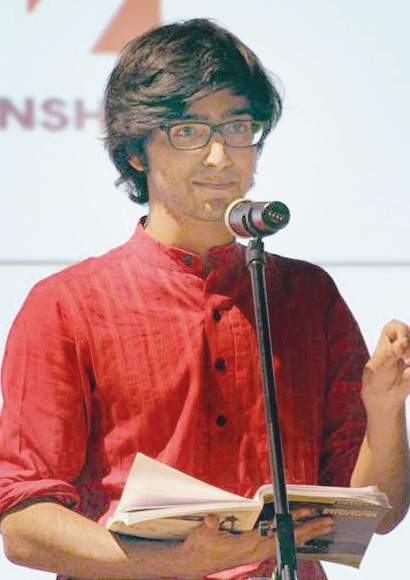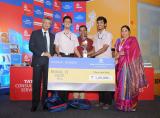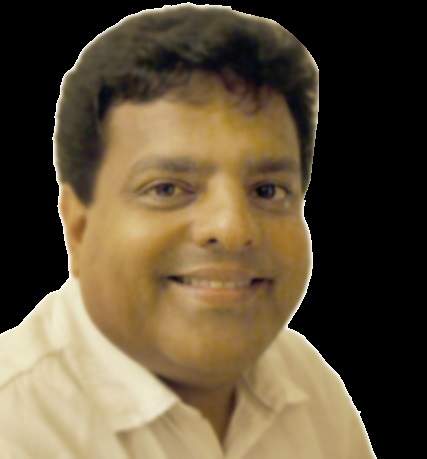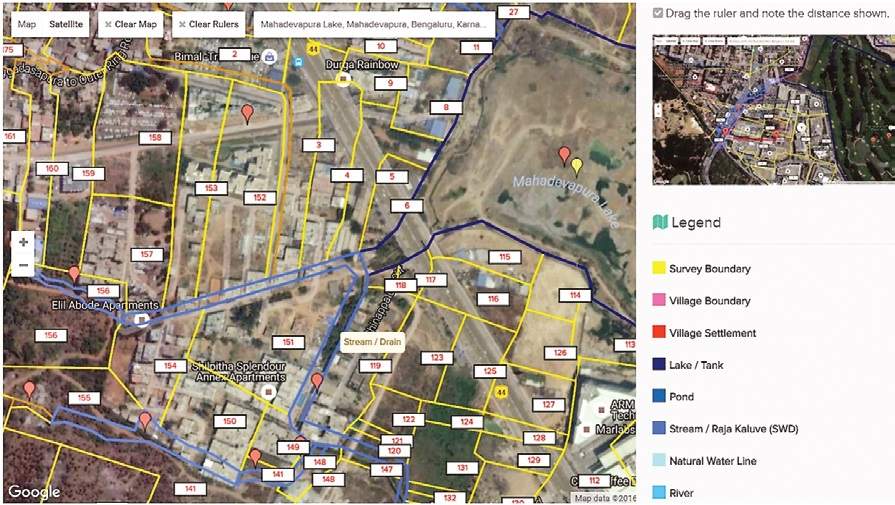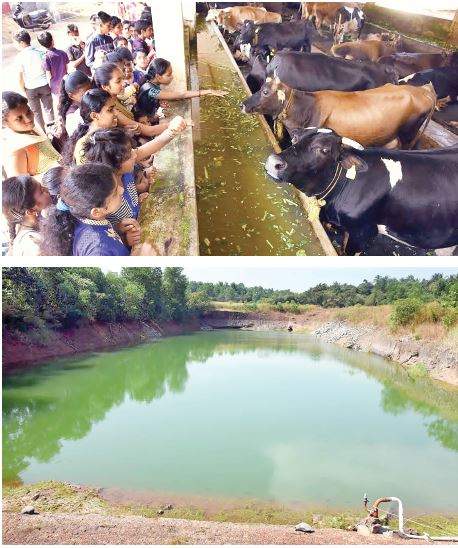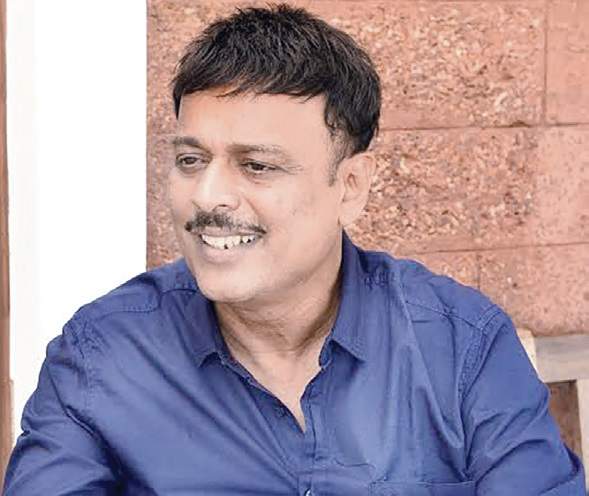Bengaluru :
The absence of advanced healthcare services in Kalaburagi had pushed Gaurav (name changed), into a state of panic, after he developed recurrent headaches following a minor fall he suffered last month. Although the report of a CT scan at a local hospital revealed nothing alarming, Gaurav was determined to seek a second opinion. He decided to make use of the telemedicine service available in the state; the images of his brain were transmitted to doctors at a Bengaluru-based teleradiology centre, who diagnosed the problem as subdural hematoma (clot in the brain). He was subsequently referred for a neurosurgical evacuation – a procedure that involves evacuating the hematoma through a small hole. “Staying away from Bengaluru has always been a handicap to getting advanced healthcare services. However, the rapidly expanding telemedicine facility ensured early detection of my problem, and I was cured,” said Gaurav, who underwent a surgery at the Gulbarga District Hospital.
Gaurav is among the many beneficiaries of telemedicine, which has helped many citizens in remote areas of the country seek medical opinion from some of the leading doctors. Meenamma (name changed) was worried sick when her two-day-old baby’s breathing became laboured, and developed poor perfusion – process of delivering blood to a capillary bed – and listlessness. The neonatologists felt it was sepsis. But, the doctors called for a cardiac screening to make sure that the baby did not have any problems in the heart. While conducting the test, the sonographer decided to consult a senior cardiologist, not present at the hospital. However, using tele-echo, the senior doctor was able to take a look at the result of the test, and subsequently diagnosed a coarctation – narrowing of the blood vessel going to the body. The baby was put on medication, and referred for a surgery.
Cardiac paediatrician and co-founder of Teleradiology Solutions, the first-of-its-kind company established in the country, Dr Sunita Maheswari said that the organisation was working with the Karnataka health department to take teleradiology services to the rural interiors of the state. “We already cover four centres in the state. The drive was recently launched by the state government at Bowring Hospital, Bengaluru. We have reviewed scan reports of at least four million patients from across the world in the past 14 years. We started working with the Indian government this month, and we deployed services for district health centres in Tripura. From our headquarters in Bengaluru, we help patients from as many as 16 countries,” she said.
Pointing to the acute shortage of radiologists in rural India, Sunita added, “India has only 10,000 radiologists. Through teleradiology, we can take their services to other areas, where there are hospitals and diagnostic centres, but no radiologists. Also, telecardiology will help patients avail opinion of experts, who are elsewhere. It is one of the leading methods of reaching patients in rural areas, suffering from cardiovascular disorders.”
Teleradiology Solutions works with four hospitals in the state. At a recent discussion on telemedicine held in Bengaluru, head of department of forensic medicine at Victoria Hospital, Dr Devdass PK said that they had managed to analyse and send 3,500 reports through telemedicine facility.
Enabling counselling from the comfort of home
Anuradha (name changed), 45, of Mysuru badly wanted to rid her teenage son of his online addiction. She wanted to put an end to his habit of frittering away entire days, surfing social media and playing games, while paying no heed to family members. Uncomfortable with the idea of taking her son to a counsellor, Anuradha sought recourse to telepsychiatry. Aided by a Bengaluru-based telecounsellor, she managed to curb her son’s addiction to gadgets. “My son is now behaving normally with the members of the family. He was able to receive help without having to leave home,” she added.
Professor in the department of psychiatry at the National Institute of Mental Health and Neuro Sciences (Nimhans), Bengaluru, Dr Manjunath N said, “Telepsychitary was introduced here six years ago. It was made possible through the Karnataka Telemedicine Network Project, introduced by the health department in 2001. Telemedicine service at Nimhans covers 25 district hospitals and six taluks. Although direct consultation with our psychiatrists is yet to begin, we continue to provide help to rural patients.”
Telecounselling eliminates the need for a patient to be physically present in the counsellor’s chambers, and also provides privacy, opined Aruna Arumugam, a telecounsellor with Healtheminds. “Also, it is accessible to those patients who cannot otherwise seek help. We get patients from West Bengal, Karnataka, Uttar Pradesh and Pakistan, seeking help mostly on relationship issues, parenting challenges and depression,” she said.
Opthalmological services made available in rural areas
Karnataka Assisted Diagnosis of Retinopathy of Prematurity (KIDROP) was launched in 2008 by Narayana Nethralaya as a postgraduate teleopthalmology programme. Since 2010, along with the state health department, Narayana Nethralaya has managed to take retinopathy of prematurity screening to 36 centres across the state, along with wide field digital imaging services.
Chairman of Narayana Nethralaya, Dr Bhujang Shetty said, “KIDROP has trained technicians to screen infants in peripheral centres, where there are no specialists using Retcam Shuttle. They can store and subsequently upload images from the rural centres using an indigenously developed internet-based PACS system. This system delivers images live to the remote expert, who then sends the report to the technician.”
E-healthcare centres benefit nearly 40,000 patients
For the past two years, Narayana Health (NH), in collaboration with Hewlett Packard Enterprise (HPE), has been looking to take telecardiology, teleconsultation and tele-ECG services to rural areas. So far, its e-health centres have managed to reach 39,624 patients in Karnataka, Tamil Nadu, West Bengal, Gujarat and Rajasthan.
“The e-healthcare centres (eHCs) are designed such that they can be fit and deployed within a standard shipping container. Or, they are retrofitted to a pre-existing clinic, depending on the community’s existing infrastructure. They are fully equipped with workstations, open electronic medical records, biometric patient identification and integrated diagnostic devices,” a source at Narayana Health said.
“The HP cloud enabled technology allows for data – clinical and administrative – to be monitored across sites via a dynamic dashboard. Teleconsultation with relevant physicians from NH unit hospitals have been established at these eHCs, and dedicated internet services at all sites ensures seamless connectivity to the geographically linked healthcare facility. Outreach activities such as community screening programmes and customised medical programmes are organised with specialist support based on the dominant disease prevalence and incidence in the eHC location and catchment areas,” the source added.
‘We’re training doctors in telepsychiatry’
Since its inception six years ago, only 2,000 patients have availed the services of the telemedicine facilities at Nimhans. Professor at Nimhans’ psychiatry department, Dr Manjunath N attributes the underwhelming response to the lack of trained psychiatrists in telemedicine. “Though patients with common and chronic mental disorders are willing to discuss their problems through e-consultation and e-counselling, lack of doctors trained in manning telemedicine services for psychiatry is the problem. Trained professionals who can offer psychiatric services to rural patients from Bengaluru would solve the problem. We are also training resident doctors in telepsychiatry to overcome the problem of scarcity,” he added.
‘Well-trained technicians, and the will to invest is all we need’
At our vision centres, we make use of a portable Slit Lamp Biomicroscope connected via LAN network to the base hospital, which helps doctors diagnose chronic conditions such as retinopathy of prematurity, a potentially blinding eye condition that affects newborns, irreversible corneal conditions like keratoconus and diabetes-induced retinopathy. All it requires are well-trained technicians and the will to invest in quality equipment.
Dr Siddharthan KS | consultant at cornea and refractive services in sankara eye hospital.
‘Services will boost medical tourism in state’
A prior screening through telemedicine ensures that the patient is screened properly, and helps us confirm if the patient has to travel to avail services at the hospital. Many a time, it has saved patients the trouble of travelling to our hospital. Moreover, teleconsultation also increases the comfort and confidence level of the patients with their doctors, who are far away. This is a boost to medical tourism, since it makes it easier for patients to know more about their doctor.
Dr Harsha Rajaram | vice president at columbia asia hospitals
source: http://www.timesofindia.indiatimes.com / The Times of India / News> Chennai News> Bangalore News / by Sreemoyee Chatterjee / TNN / November 28th, 2016

